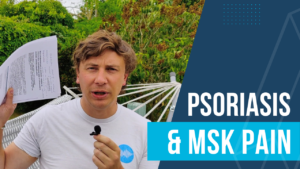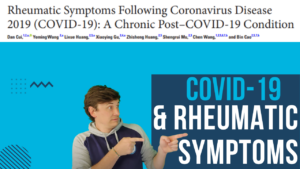Would you like these blogs directly to your email inbox? I now have a weekly newsletter! SUBSCRIBE HERE
Happy New Year Rheumatology Fans, we are starting 2022 with a BANG as there is a great consensus document that has been published about none radiographic AxSpA. It only came to my attention in the last 24 hours so I havent had time to fully get to grips with it yet but a couple of things drew my attention which I wanted to get started with in this blog for you. In other news we have courses up both in-person and virtual, check them out HERE there are limited tickets so grab them before they disappear and you miss out. Also the updated, upgraded, and all-around better recorded course is live too so check that out for a ton of learning.
Please consider heading to the shop to find more resources and supporting me to continue this hair-brained project! Or you can Buy A Coffee
You can also listen to all of my blogs as podcasts subscribe to your preferred channel HERE You can also find my podcast on Apple & Spotify & Google
As usual, feedback is greatly appreciated and for any further reading for me please send it my way!
PLEASE REMEMBER – THIS BLOG IS NOT A REPLACEMENT FOR CLINICAL REASONING, IF YOU ARE UNSURE GET ADVICE
To read the full document CLICK HERE it is open access, I am sure I will be coming back to this in future!
As a quick reminder. None Radiographic Axial Spondyloarthritis (nr-AxSpA) falls under the umbrella term Spondyloarthritis, it has a similar disease burden to the other types of AxSpA such as Ankylosing Spondylitis the difference being that there are no Sacroilliac Joint changes on plain radiograph (xray). Women are more likely to present with nr-AxSpA than men. You can read more about Spondyloarthritis HERE and HERE.
Australian Consensus Statements for the Assessment and Management of Non-radiographic Axial Spondyloarthritis
This document goes into A LOT of detail, I am really looking forward to getting stuck in, I wanted to get started with their key summary points and also some of the parts about imaging.
Key Summary Points
“Non-radiographic axial spondyloarthritis is closely related to ankylosing spondylitis, but has no definite sacroiliac changes on plain radiography.”
This is related to waht we mentioned about in the first part of the blog. It is important to understand the similarities and differences in the presentations of these related conditions as its a vital part of the clinical reasoning process. Relying heavily on one component of the reasoning process e.g. bloods or imaging will lead to misdiagnoses especially in the less obvious presenting cases such as people in the early part of the disease and/or women.
“Diagnosis requires consideration of symptoms, examination, HLA-B27, CRP, and imaging by a clinician experienced in this condition.”
This adds a bit more detail to the above point, I want to draw you to the end portion of this statement. Those of us outside of Rheumatology departments (and some specialist clinics) should be referring suspected AxSpA cases to those whose role it is to make diagnostic decision decisions in this context. There may be circumstances where we would investigate but if our clinical suspiscion is that AxSpA is a possibility then we should absolutely be referring on.
“No single diagnostic feature or test is perfectly sensitive or specific.”
Fairly self explanatory. Are features and tests ever perfect? There are false positives and false negatives all over the place in AxSpA and these are especially true in the none-radiographic cohorts.
“Management should begin with NSAIDs and an exercise program and can be escalated to targeted therapy.”
Moving on to the management of the condition, NSAIDs and targeted therapies will usually be handled by Rheumatology but we can start the exercise programs immediately. Align with patient preference, ability and experience. Reassure that they are safe and effective. Utilise colleagues who may be more suitably placed in the care pathway.
Imaging
Deeper into the paper there is some guidance on imaging which I found very interesting. I don’t think it will make a great change to my current practice but it does highlight some reasoning points and further consideration of findings.
Xrays – Remember we are talking about none-radiographic AxSpA specifically here. Thus when we xray it should NEGATIVE for changes in the SIJs compared to say Ankylosing Spondylitis where we will see changes. This is a necessity for diagnosis. This does not mean I think we should be doing the xrays in primary care as it is not going to change the patients pathway as we would be referring the patient to Rheumatology regardless of the finding! Unless the xray is indicated for another differential diagnosis.
MRI – Sacroilliac Joint MRI is a necessity utilising non contrast T1 and Stir sequences. The statement goes on to describe how the rest of the spine imaging is a bit more problematic. In 50% of those with changes in the SIJs (e.g. sacroillitis) there were also findings in other parts of the spine. In those without changes in the SIJs false positives occurred in one third of cases. I will still continue to advise whole spine MRIs with the correct sequencing (SpA Protocol) but I will be very cautious in those without SIJ findings. Again, I would echo that we need specialist input to interpret all the clinical and radiological details in combination to truly make sure we are ruling in or ruling out a nr-AxSpA.
More information
I will be reviewing the rest of the document as time allows and I hope to have more on these subjects in future blogs. There is also a lot more detail in my courses and previous blog posts.
Thank you for reading and keep in touch!


